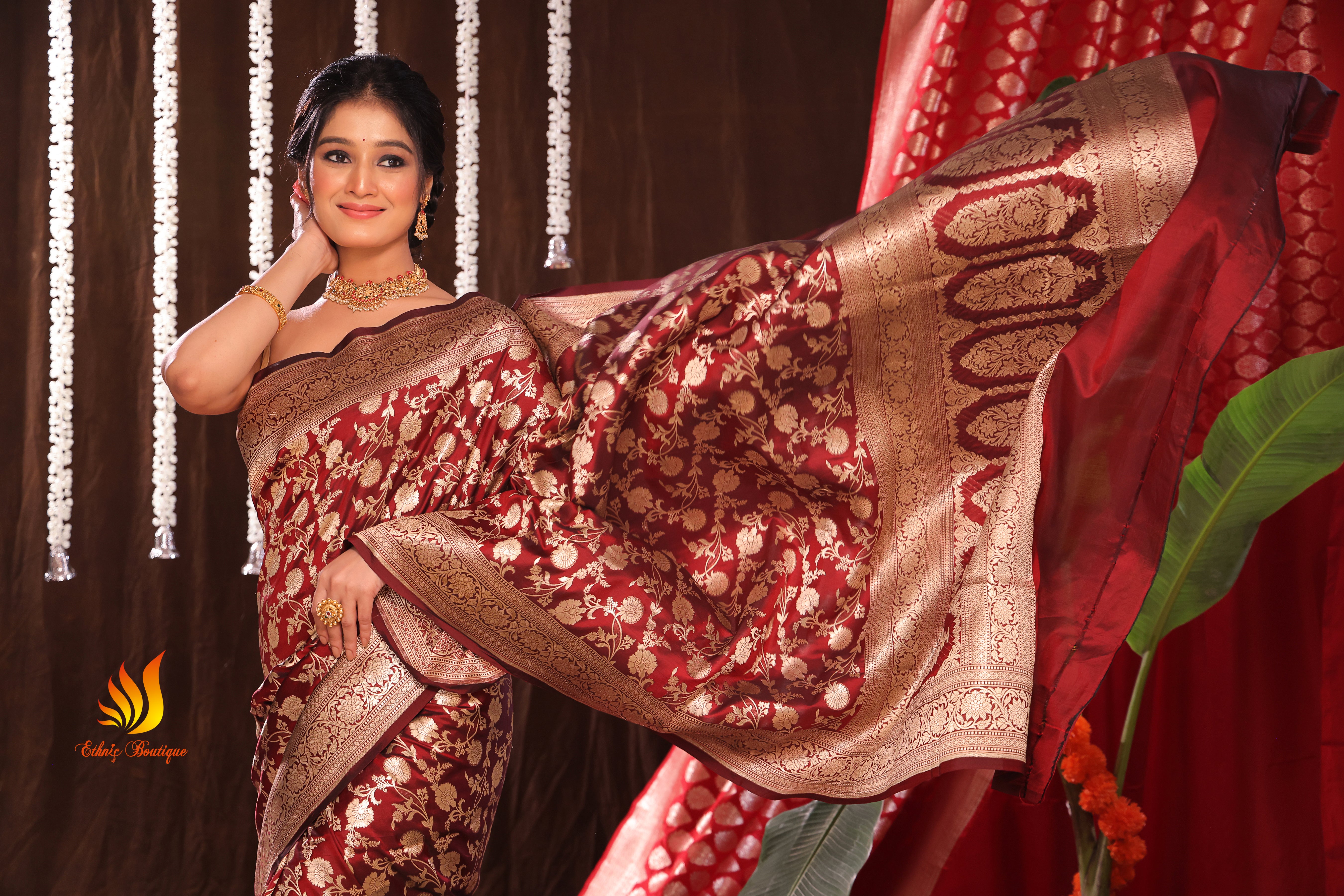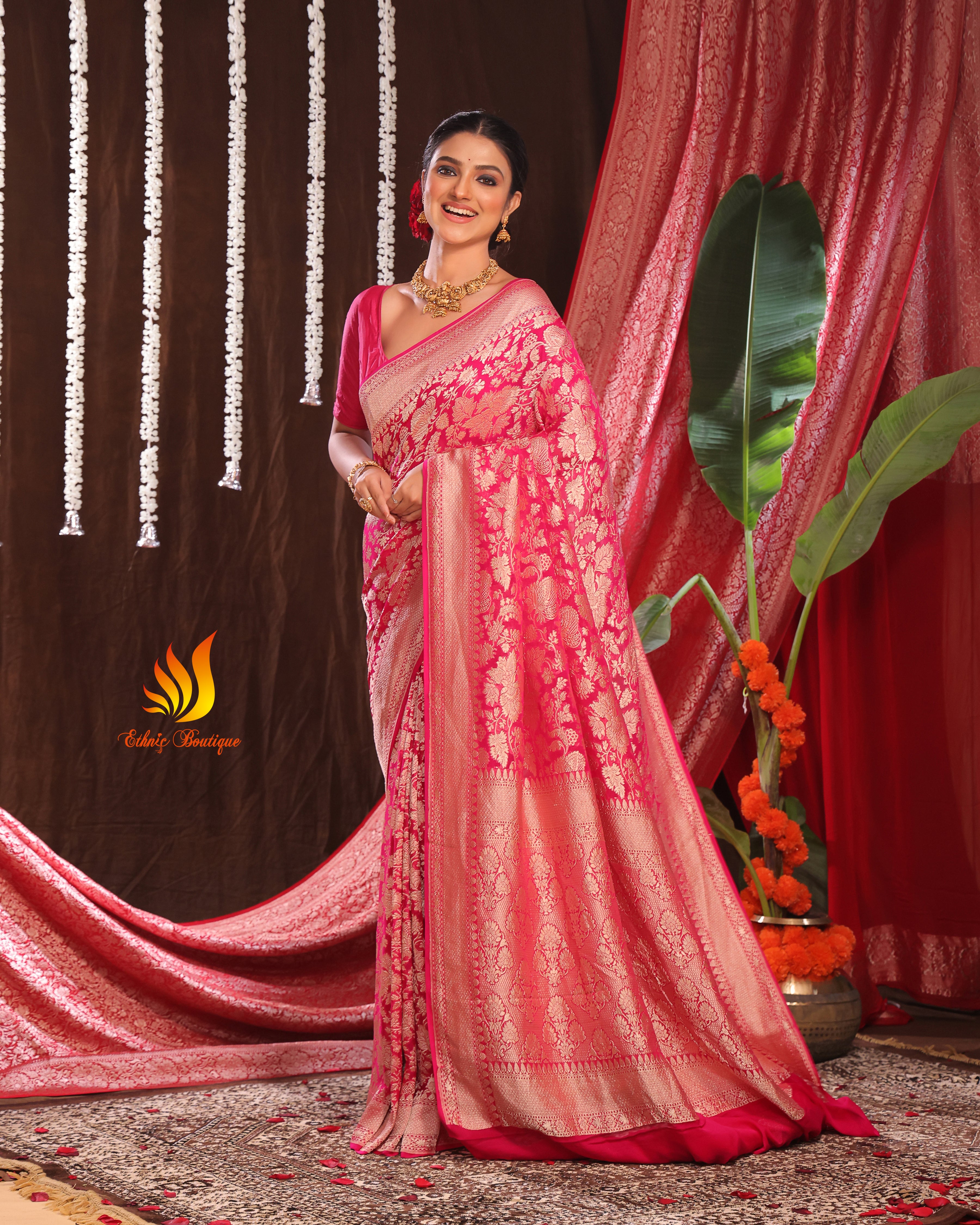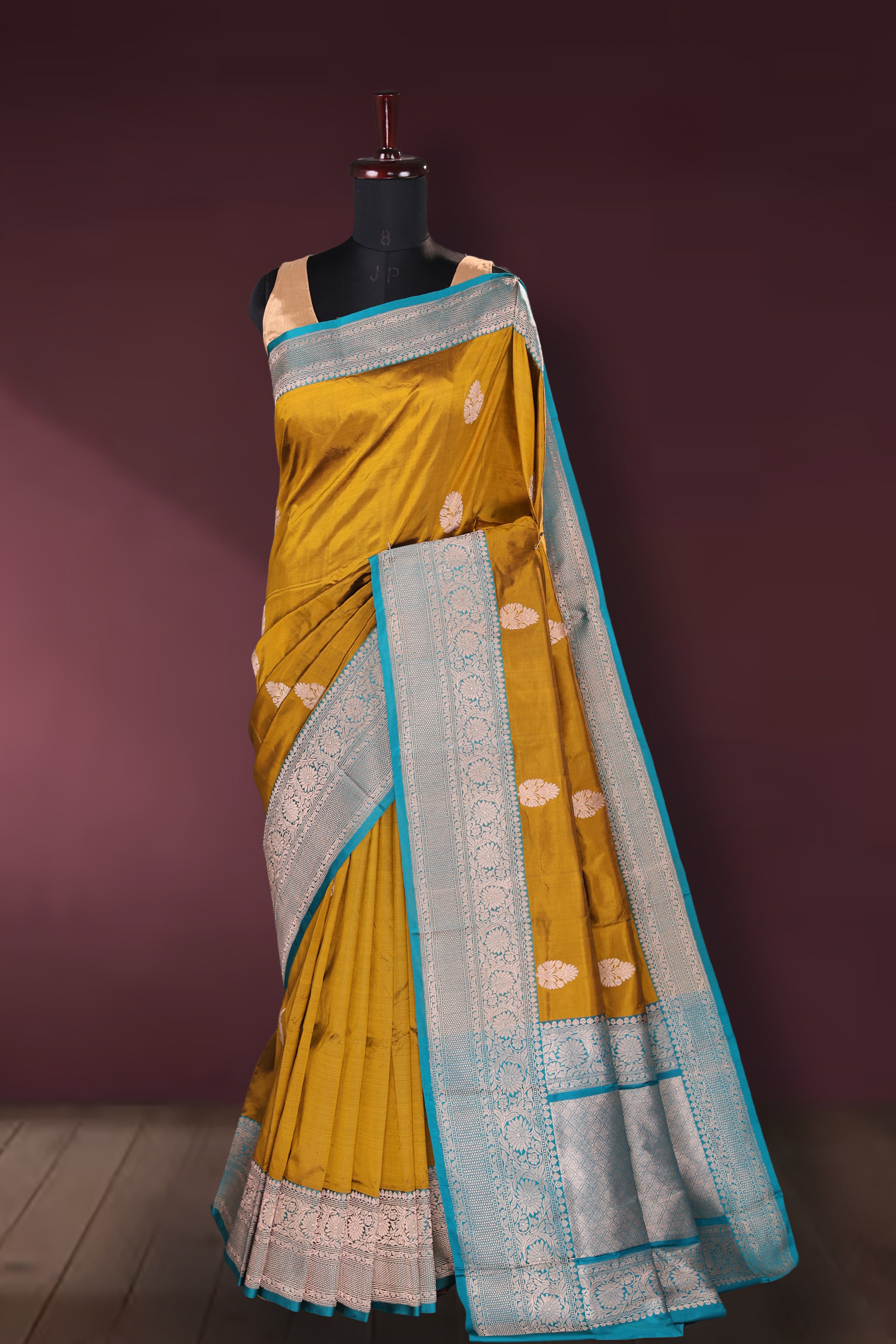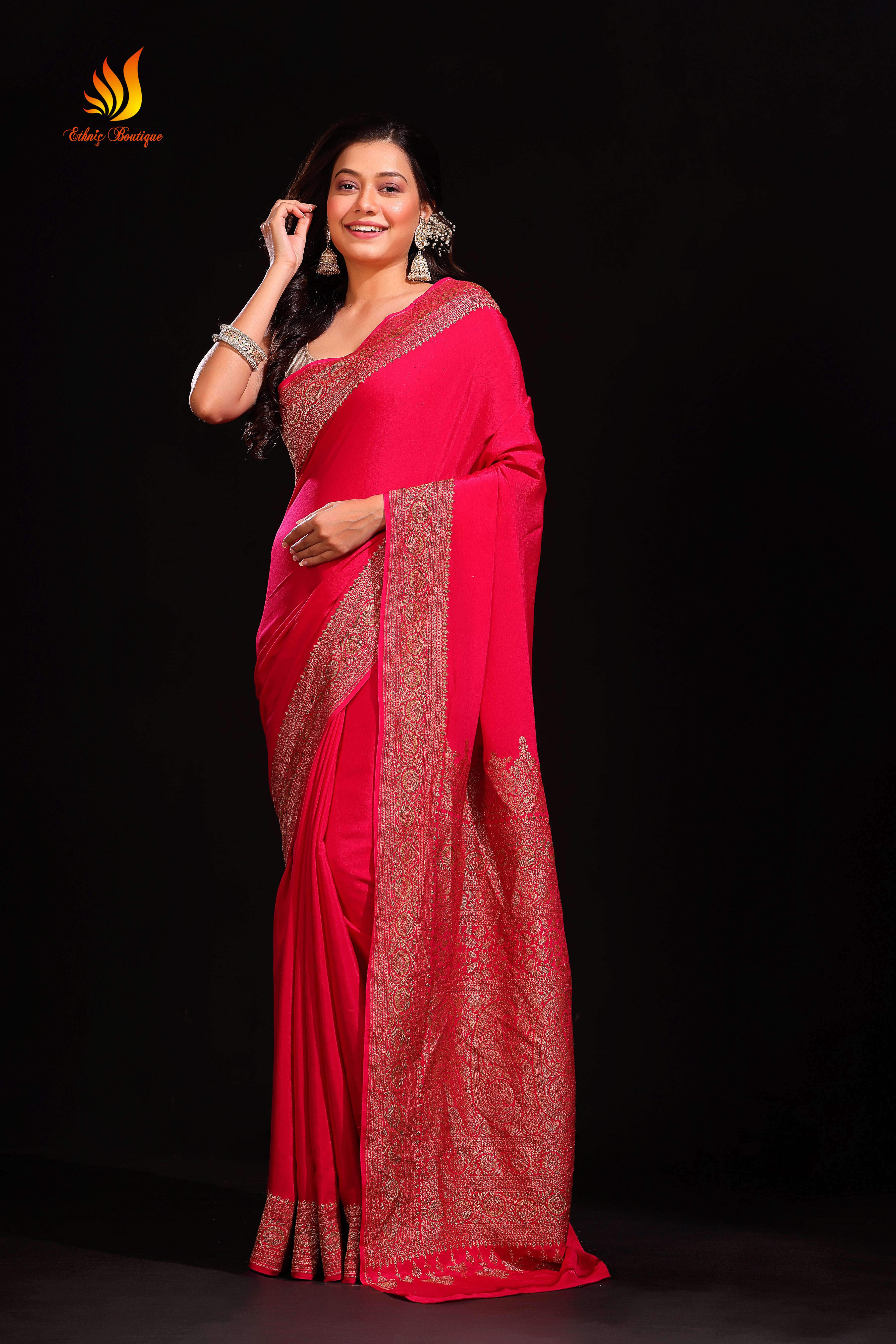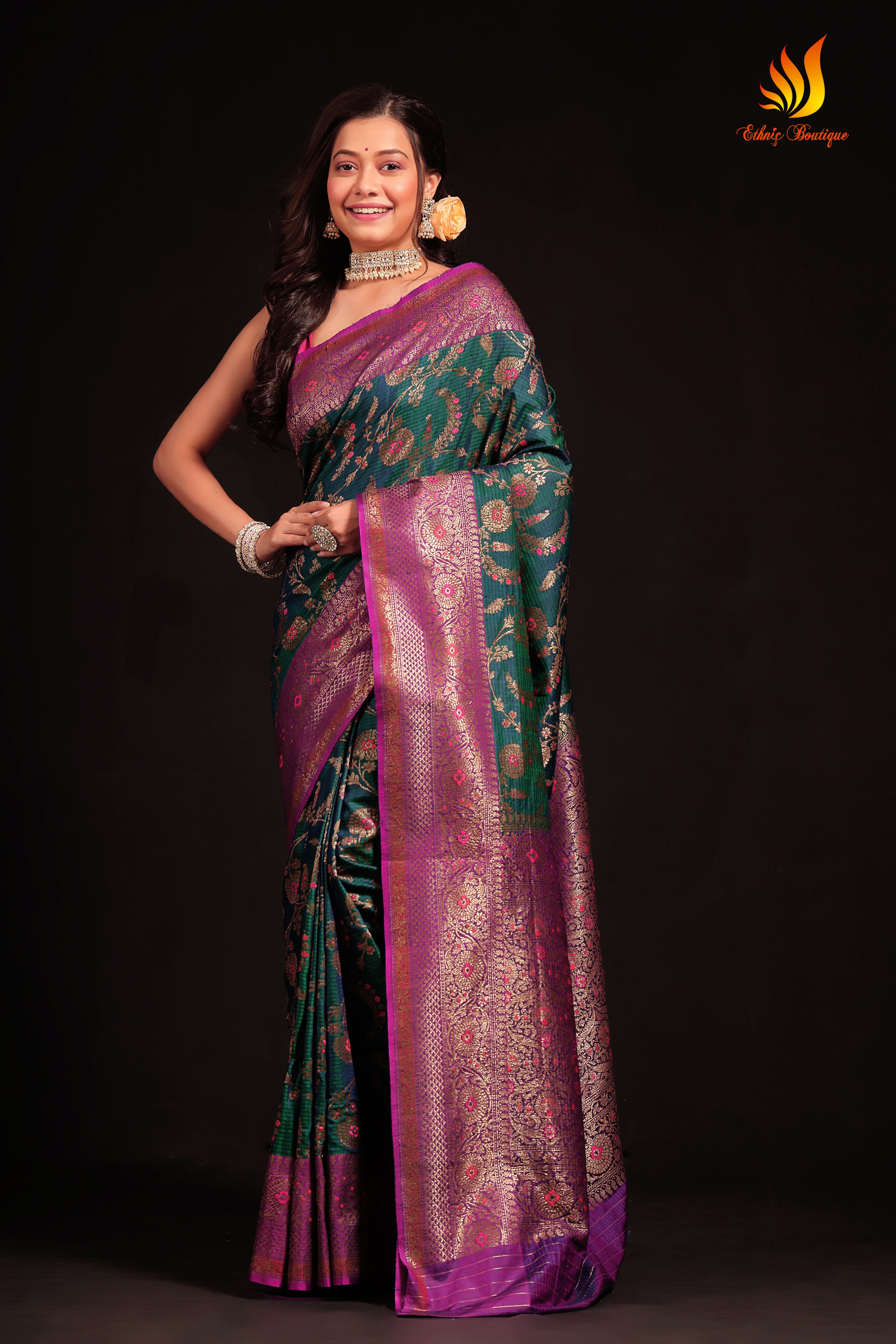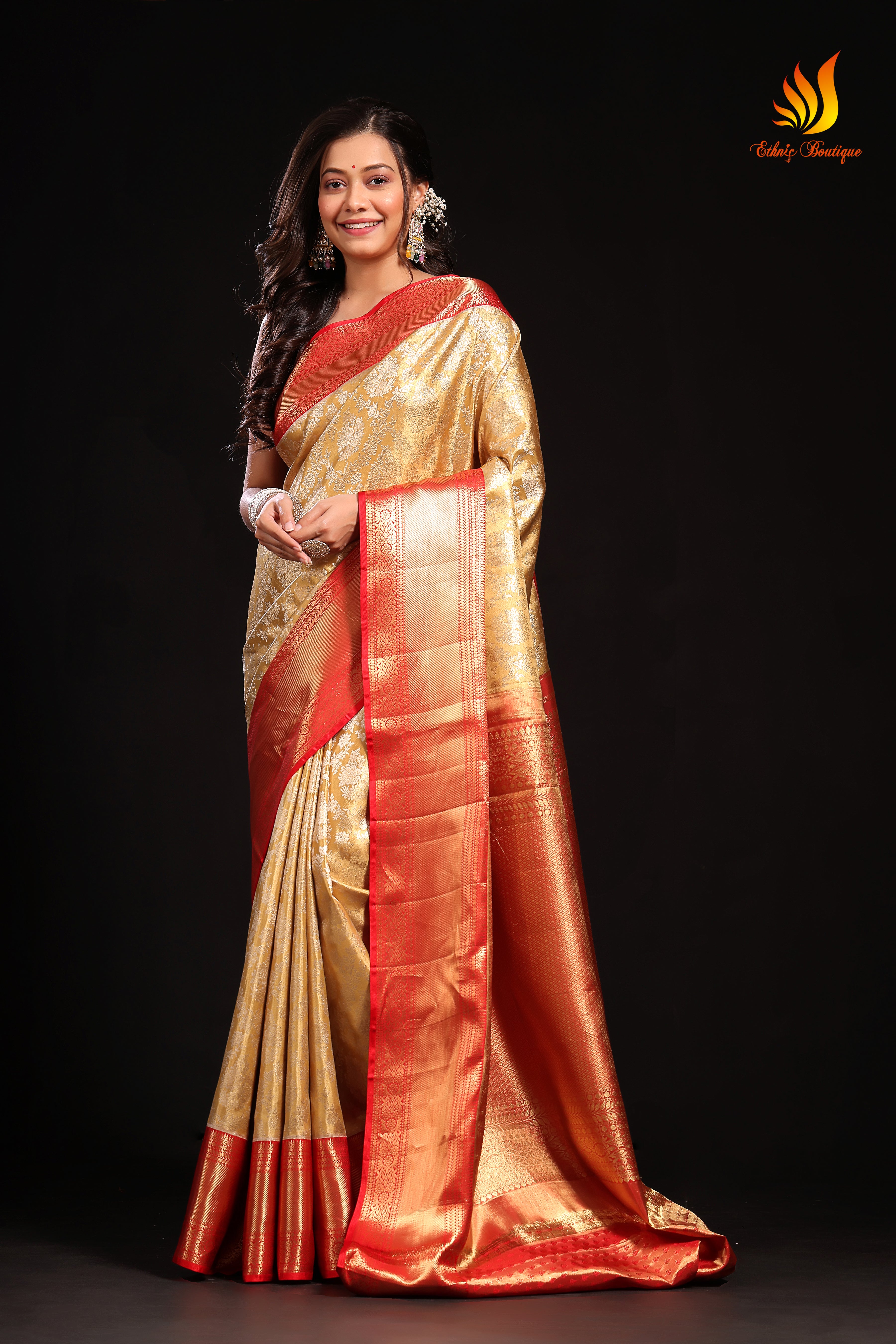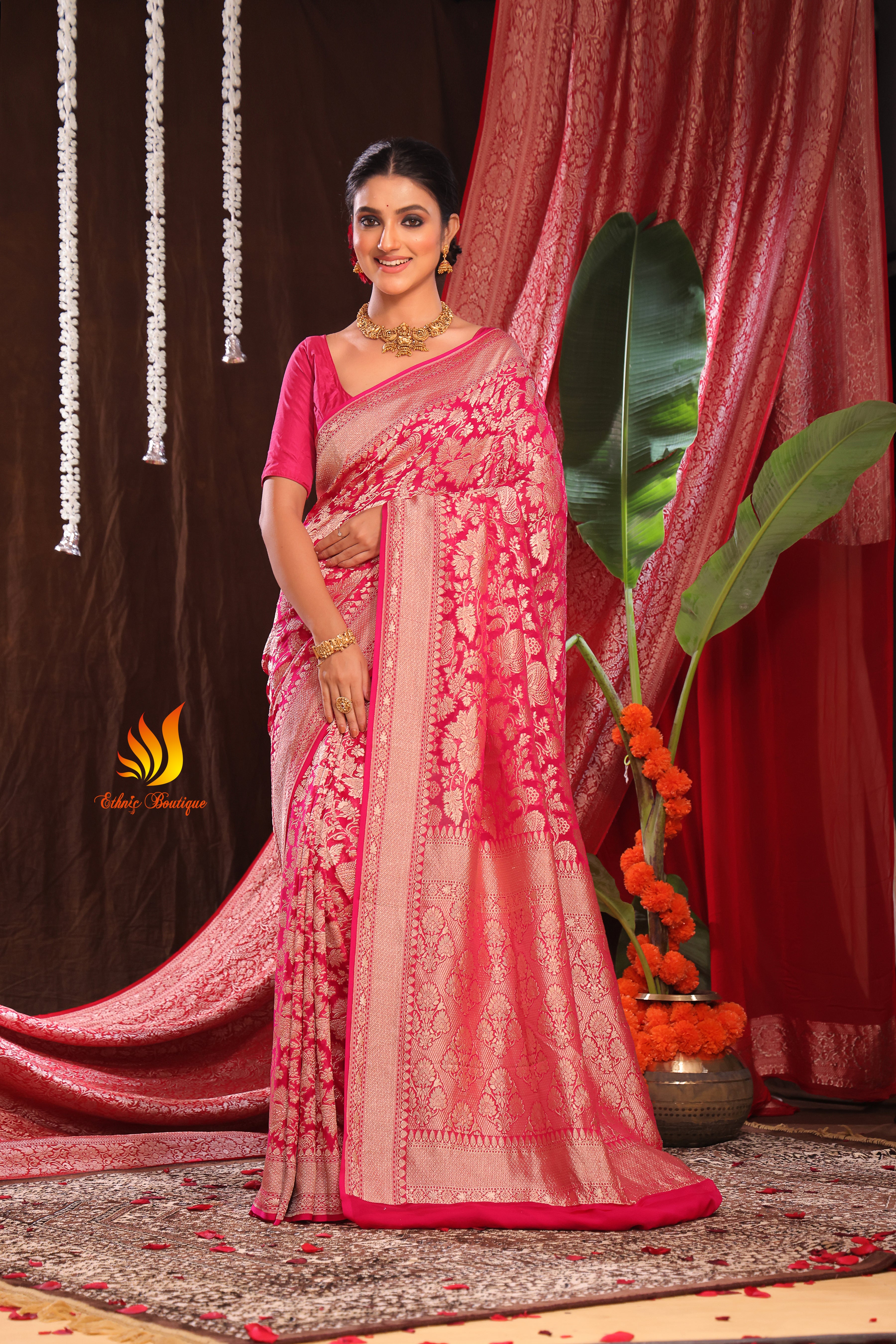An Ilkal silk saree is a traditional and highly regarded Indian saree that hails from the town of Ilkal, located in the Bagalkot district of Karnataka, South India. These sarees are known for their distinctive style, intricate craftsmanship, and rich cultural heritage. Here's a closer look at the key elements that make an Ilkal silk saree unique:
1. Fabric and Weaving Style
-
Silk and Cotton Blend: Ilkal sarees are often made from a combination of silk for the body and cotton for the border, although sometimes pure silk is used for the entire saree. The silk used in these sarees is soft and lustrous, providing a luxurious feel.
-
Handloom Weaving: These sarees are traditionally woven on handlooms by skilled artisans. The weaving technique is intricate and has been passed down through generations, contributing to the timeless appeal of the saree.
2. Design and Patterns
-
Borders: One of the most distinctive features of Ilkal sarees is their wide contrasting borders, which are typically made of a thicker fabric. The borders often feature geometric patterns or traditional motifs, such as peacocks, lions, and floral designs. These borders are usually woven in bright colors like red, gold, or green.
-
Pallu: The pallu (the end portion of the saree that drapes over the shoulder) is a crucial element in Ilkal sarees and often contains more elaborate designs. The pallu is usually adorned with intricate patterns, sometimes involving silk threads or brocade work.
-
Traditional Geometric Designs: One of the hallmark design elements is the use of Parnathi, a traditional type of geometric pattern, often in the form of squares, triangles, or diamond shapes. These motifs are woven into the fabric to create intricate and eye-catching designs.
3. Colors
-
Ilkal sarees come in a variety of vibrant colors, though traditional ones often feature rich hues like red, green, blue, and yellow. The contrasting combination of bright colors in the body and border is a key feature of Ilkal silk sarees.
4. History and Origin
-
The tradition of weaving Ilkal sarees dates back several centuries and is believed to have originated in the Ilkal region of Karnataka. The craft has been passed down through generations, making it a significant part of the local culture and heritage. Artisans from this region have perfected the technique of weaving silk and cotton together to create this iconic saree.
-
The saree is popular not only in Karnataka but also in other regions of South India and is often worn during weddings, festivals, and special occasions.
5. Significance in Culture
-
The Ilkal silk saree is seen as a symbol of elegance, tradition, and craftsmanship. It's often gifted during major cultural events like weddings or milestones in a woman's life.
-
The saree is a cherished part of Karnataka's textile heritage and plays a key role in preserving the region's weaving traditions.
6. Durability
7. Modern Innovations
-
While the traditional weaving methods remain unchanged, contemporary Ilkal sarees may incorporate modern patterns, colors, and embellishments. Many saree designers are experimenting with the traditional craft, bringing it into the modern fashion world.
8. How to Care for Ilkal Silk Sarees
In short, an Ilkal silk saree is a beautiful blend of traditional craftsmanship, vibrant colors, and elegant patterns. It's not just a piece of clothing but a representation of rich culture and history, making it a cherished garment for many.
